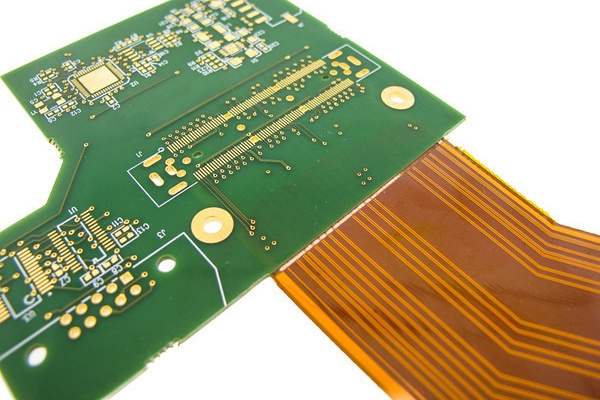One question we get asked frequently is: "Why does flex and rigid-flex PCB tooling cost more than rigid PCBs?" The answer is quite simple; flex circuit tooling is a much more complex process than standard printed circuit boards.
Flex Circuit Boards Require More Engineering
Besides the tooling process complexity, flex circuit technology also requires additional engineering programs (files) to be created. Some flex designs may also have stiffeners, pressure sensitive adhesive (PSA), Coverlays, etc. All of these specifications require additional engineering programs to be created and the majority of the process cannot be automated. This requires an engineer to manually review the flex circuit design and create these custom programs.
4-Layer Rigid PCB vs. 4-Layer Rigid-Flex Design
An example of a 4-layer rigid circuit board design may have 7-films plots which contain 4-films for the artwork, 2-films for the soldermask, and 1 film for the silkscreen. In addition, there is also an outline route file.

Rigid-Flex Printed Circuit Board Design
A simple, let me repeat that again, simple 4-layer rigid-flex design will have the same 7 film plots mentioned above, goes beyond that with a minimum of another 5 routing programs that need to be created.
Additional Routing Programs May Include:
- One program to remove the rigid material from where the flex layers exist.
- Another to remove the Pre-Preg material from the flex layers.
- You need to create a specific unique routing program for the flex outline.
- Need an additional routing program for the flex Coverlay.
- Finally, a program for the rigid area or the assembly array.
Prototypes and Small Volume vs. Production Quantities
The other factor in the cost of tooling charges comes down to volume. For rigid-flex and/or flex prototypes and small volume runs, most are manufactured with laser cutting or some type of mechanical routing. This is used to create the surface mount features in the Coverlays, part outline, and if required, the outline of the stiffeners. Electrical testing on these lower volumes is typically done with a flying probe.
In volume production of flex and rigid-flex circuits, you need to switch over to steel rule dies or male/female punch and die sets. These steel rule dies are typically more expensive to create verses the laser cutting technique. The electrical test fixtures are also switched over to a hard-wired test, which can be more labor intensive. Both of these factors can add an initial upfront expense, but it allows for a substantial reduction to the unit price of the part when you are dealing with higher volumes.
Summary
The primary reason for the more expensive tooling charges associated with a flex or rigid-flex circuit board really comes down to the amount of manually created engineering programs a specific design may have. The other reason is the volume, but in production volumes we typically see that most customers recoup the additional expense in 2000 pieces or less.
Key Takeaways
- Flex Tooling Involves Greater Complexity: Unlike rigid PCBs, flex and rigid-flex designs require additional steps, materials, and precision, making the tooling process far more intricate.
- More Engineering Programs Are Required: Each flex circuit often needs multiple unique engineering files for stiffeners, PSAs, and Coverlays, much of which must be created manually rather than automated.
- Rigid-Flex Designs Add Multiple Routing Programs: A 4-layer rigid-flex circuit can require five or more extra routing programs beyond what a standard rigid PCB needs, significantly increasing setup time.
- Tooling Methods Differ by Volume: Prototypes and small runs rely on laser cutting and flying probe testing, while high-volume production transitions to costly steel rule dies and hard-wired test fixtures.
- Higher Initial Cost, Long-Term Savings: Although flex and rigid-flex tooling costs more upfront, those expenses are often recovered after around 2,000 units due to reduce per-part pricing in production.

















